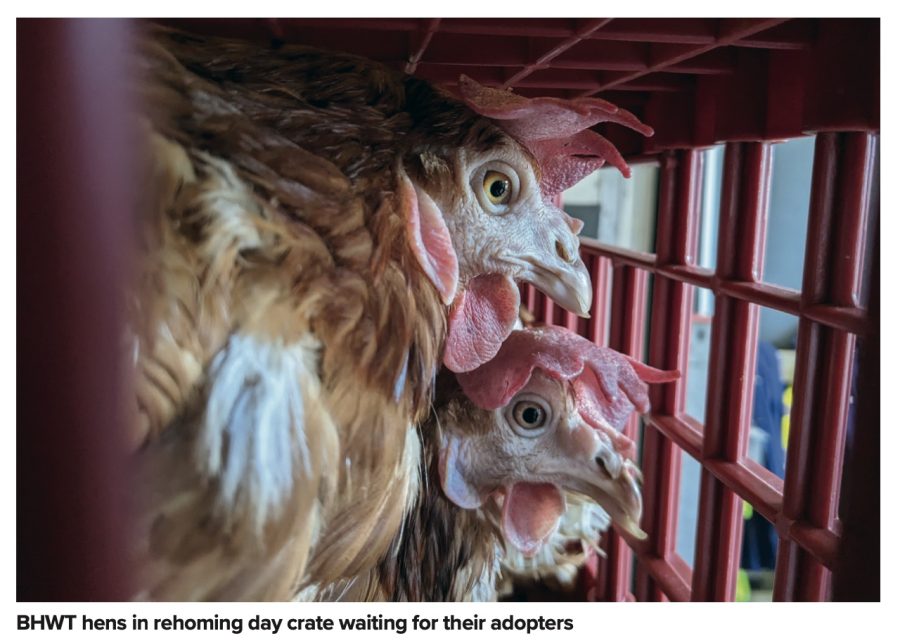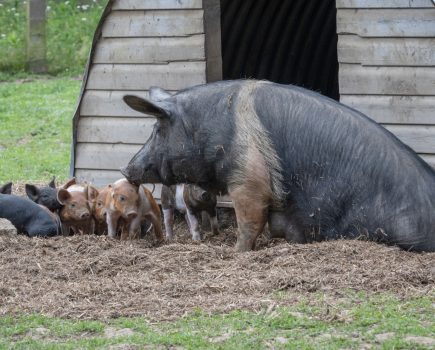With spring in the air and eggs on our mind, now’s a great time to think about expanding your flock or starting out with a few second-hand hens, says the British Hen Welfare Trust (BHWT).
Diligent layers, friendly, precocious, and endearing are just a few of the common descriptors used to describe ex-commercial hens. The most common phrase? Life enriching.
Let’s get started with the basics, from how many hens to adopt to introducing them to resident pets…
How many hens can I adopt?
Hens are sociable creatures and like to be part of a flock, so the minimum number of hens you can reserve is three. If you already have hens then you can adopt just two, while the most you can adopt is 20 which must all stay together with you.
Can I adopt hens if I already have other chickens?
Yes! We always advise you adopt a greater number of hens than you currently keep, so if you already have, say, three hens, make sure you adopt at least four new ones.
This gives the incoming hens advantage in numbers over those who are already familiar with your routine and will help them settle better.
When can I get my hens?
Our rehoming days are timed around when farms are ‘depopulating’ (in other words, making way for new hens by sending their current flock to slaughter). Our volunteer teams around the country usually hold rehomings every four to six weeks and you can check our upcoming collection dates on our website. You’ll need to apply to rehome and book your hens first, so do give us a call; this essentially allows us to ensure we are giving you the best advice we possibly can.
What will a hen cost?
A donation of £3 per hen contributes towards our running costs, whilst £6 per hen means we can work towards saving more from slaughter and helps to fund other aspects of our work. This includes providing a free Hen Helpline service to anyone with a poorly hen, increasing knowledge within the veterinary profession so that hens are better supported, educating consumers and much more. We even offer advice to hen keepers internationally, our motto being where there’s a hen needing help, we will try to provide it.
How much space will they need?
We always recommend giving hens as much space as possible. The minimum they will need each is 30cm2 of floor space inside the house, 25cm of perch space and outside run space of 1m2 each for ex-caged hens and 2m2 for ex-free-range hens, plus room to free range each day.
Hens need enough space for good social interaction and by restricting space, you risk stressing your flock and inviting unhealthy behaviour. This is also something to bear in mind if you’re planning to add to your flock in future.
What breeds are BHWT hens?
Our hens are all commercial hybrids: Lohman Browns, Goldlines, Hylines or Isa’s, all of which are Rhode Island Red crosses. They are approximately 17 months old when we collect them from farms when they would otherwise be sent to slaughter because they are deemed no longer commercially viable as they may be laying fewer eggs. We collect hens from enriched cages, barns and free-range farms.
These hybrid hens are bred to be docile, and you’ll find they have very individual characters. They are gentle, inquisitive and friendly, eating out of your hand and following you around the garden and even into the house if you let them!
This article extract was taken from Practical Poultry in the April 2024 edition of The Country Smallholder. To read the article in full, you can buy the issue here.
To receive regular copies of The Country Smallholder magazine featuring more articles like this, subscribe here.
For FREE updates from the world of smallholding, sign up for The Country Smallholder newsletter here.








